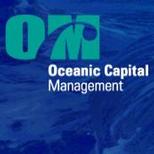Model manager Andy Djordjalian’s South America model focuses on industries that operate in South America. His model beat the S&P 500 in May, June, July and August and as of September 23rd was continuing to do so. When we spoke with him this week, we asked him about the strategies behind his success and how he thinks the upcoming Brazilian presidential campaign will affect his model.
Covestor Live: Your model outperformed the S&P 500 from May through August. What would you say are the most important strategies you’ve employed or processes you’ve followed in order to accomplish that?
Andy Djordjalian: Charted versus the S&P 500, the model appears to have been tracking the index until late May, outperforming since. But versus South American benchmarks, the over-performance was more or less sustained since inception on December 3, 2009. The region performed poorly during the first six months, the best I could do was to obtain a result that was close to the S&P 500. When the regional markets started doing better, I capitalized on that initial ‘defensive’ outperformance.
To accomplish that, on the one hand, I employed a good level of diversification, with weights that were not equal nor entirely based on market caps, but rather supported by macroeconomic analysis and other factors, which I constantly updated. In my investment reports you can read that I placed some initial overweight in Chile (January report) and Peru (February report), two countries that performed very well, to pay more attention to Brazil when this market bottomed (February and June reports). Diversification was furthered with allocations in fixed-income and Canadian miners that operate in these countries, which also contributed. Having variety reduces risk and offers the chance to use gains from some segments to enlarge others that look cheap, like I did when I sold from Chile and Peru to add to Brazil. Nevertheless, I did these country shifts moderately, meaning not with a large portion of the portfolio, because I always give priority to diversification.
On the other hand, even though I kept the focus on stock that I found useful for the realization of my top-down design, I did play with the timing of my individual trades, in some cases selling when a price raised to a point that I found hard to justify compared to the rest of the market. This other kind of active management was an additional source of performance because it allowed me to repurchase, at a more-convenient price, stock that I had sold, like I did with Embraer (ERJ), Exeter Resource Corp. (XRA), Banco Santander Chile (SAN) and NII Holdings (NIHD). It is worth mentioning that, although active management is frequently criticized in the world of mutual funds, it is different with Covestor because model publishers can get in and out of positions with much more agility than allowed to the managers of those mainstream funds, who are conditioned by the huge sizes of the portfolios they manage.
CL: In August you added additional shares of NII Holdings Inc (NASDAQ:NIHD), a position that had been one of your bottom performers in July due to your late-month purchase of the position. What factored in to your decision to add additional shares?
AD: I believe in the growth potential of this company and don’t see it sufficiently priced into the stock. During my holding periods, I also found NIHD to be useful for my diversification and macroeconomic-based objectives. For example, when I re-entered this position in late July, it was part of a small movement out of Brazil, as I used the proceeds from my previous trade, the sale of Brazilian homebuilder Gafisa (GFA). NII Holdings has important operations in Brazil, but the price of its shares is not that much correlated to the Brazilian stock market, probably because the company is based in the U.S. and, besides offering mobile telecom services in Brazil, it operates in Mexico, Argentina, Chile and Peru.
Until August 11, I had a small amount of cash set aside in case an opportunity appeared, but by those days I believed it was better to place it back into stock because economic conditions were improving. NIHD was the destination I chose for it, basically because the rationale for my July purchase was intact. Looking at the charts I can see why I considered that day to be good for the trade, as the stock had dropped in the middle of a generalized market correction after having visited higher ground the days before, and it was finding support at a price that was higher than its previous low of July 29. (CL Note: NIHD’s low on July 29th was $36.34. Mr. Djordjalian purchased it on July 27th for $37.51 and on August 11th for $37.28.) The fundamentals and the chart pattern probably led me to believe that the stock was in a bullish trend that may be sustained, but it had suffered from a short-term generalized sell-off that didn’t take into consideration its individual potential. At the time, I must have analyzed the 5-day chart in more detail, as well as the alternatives to this stock that would also have worked for my top-down design.
CL: What industries are you currently researching for the model, and why?
AD: I’m studying the industries in the universe of stocks traded in the U.S. that belong, in one way or another, to South America. For example, ADRs corresponding to companies based in this region, among other kinds of securities. This set is explained in the model profile. It is comprised of about 110 stocks (I mean the ones that comply with Covestor’s rules, which are the ones that I intend to invest in).
Currently, my research has some focus on banking. I think this sector has a special potential due to the large inflows of capital that the region is receiving, driven by strong commodity prices and high global liquidity. One more reason to be optimistic about banking is the sustained growth of their customer base as these countries mature financially. Moreover, I believe the Brazilian government may introduce some monetary relaxation in the short term, which would favor its banks, especially if combined with a doze of fiscal tightening after the elections, even a small one. Therefore, I am re-assessing the sector, factoring in the recent developments in their financials, price movements, and in the economic perspectives. But please don’t take this paragraph as a trading recommendation.
CL: What role will the Brazilian presidential campaign play in your future strategy and considerations for the model?
AD: Few doubt that the candidate of the ruling party, Dilma Rousseff, will win on October 3, so I’m not expecting any sudden developments. There are some open questions regarding her future policy, which I believe will be sorted out only after her cabinet is assembled, as I discuss in my latest report. I have been following some of her debates and interviews looking for insight about her thinking. I found it useful to be able to understand them in the original Portuguese because I think that the summaries that are published in English are often lacking. One of my conclusions, in line with the opinion of many analysts, is that this change of president will not bring any significant discontinuities. Therefore, other than paying attention to Rousseff’s discourse and the professionals she nominates as her future collaborators, I’m just going on with my normal investing process.


